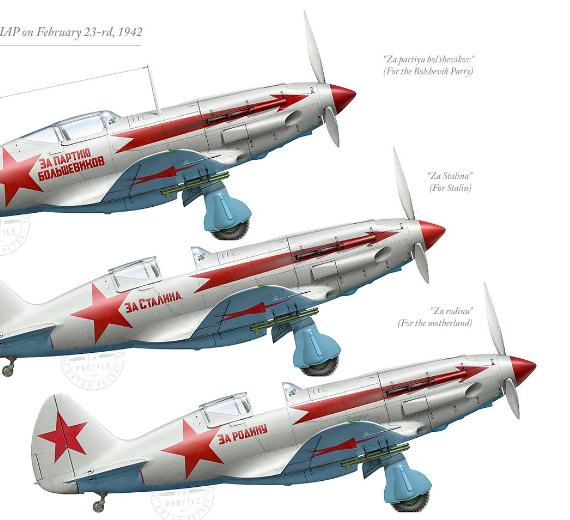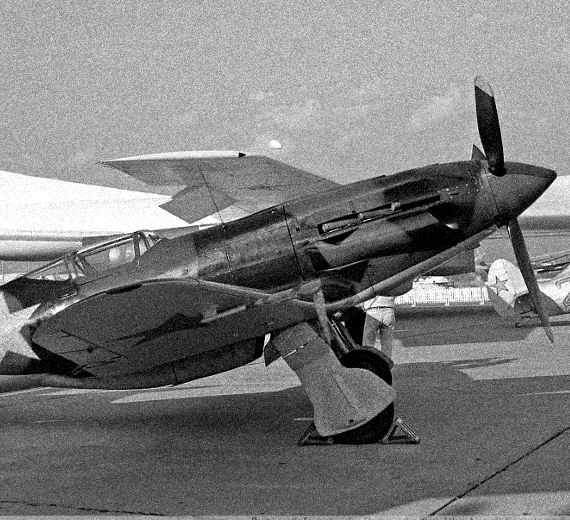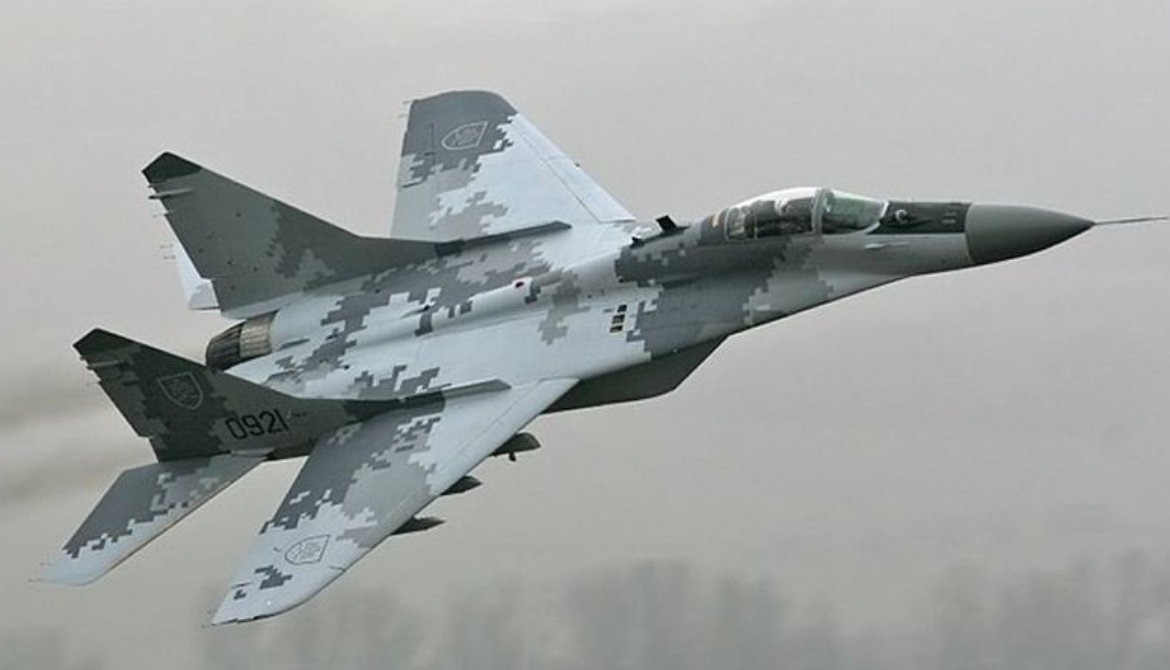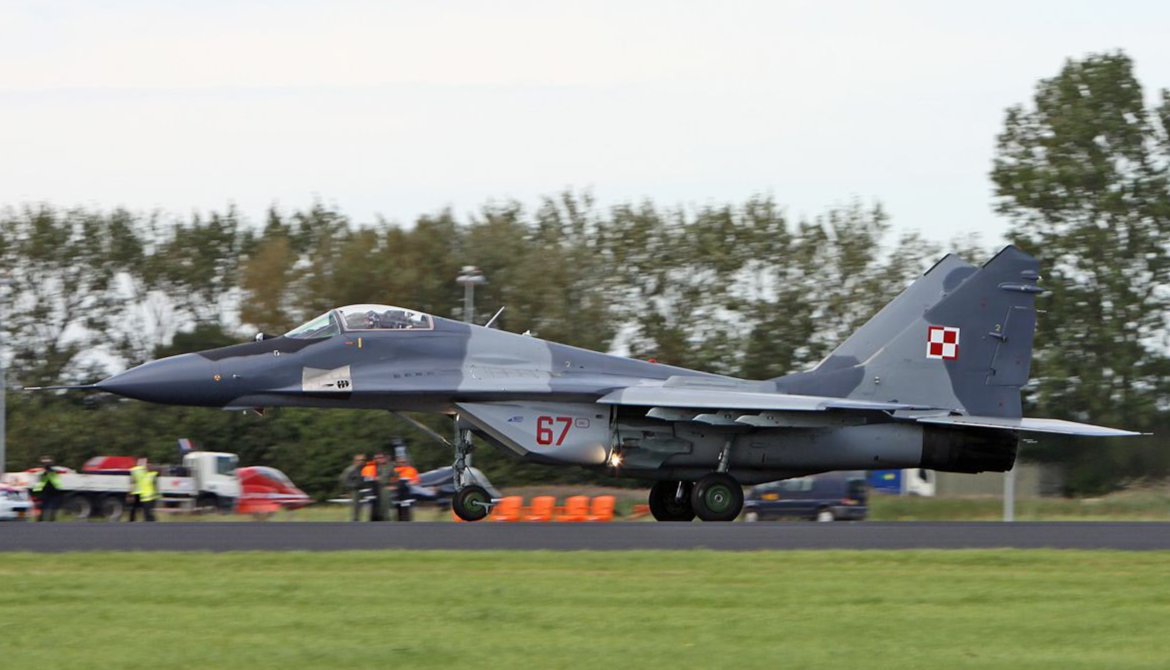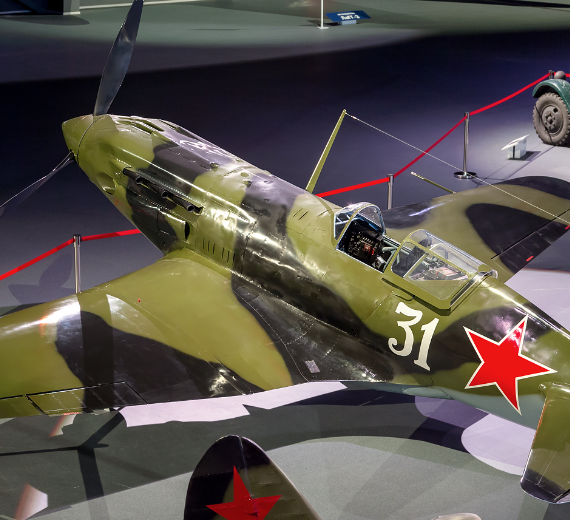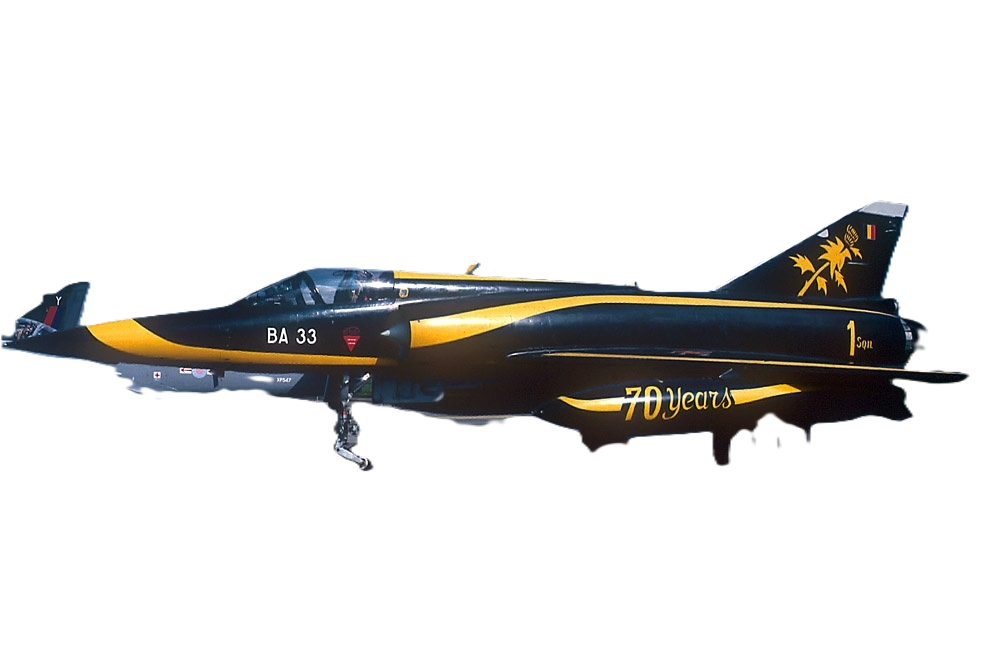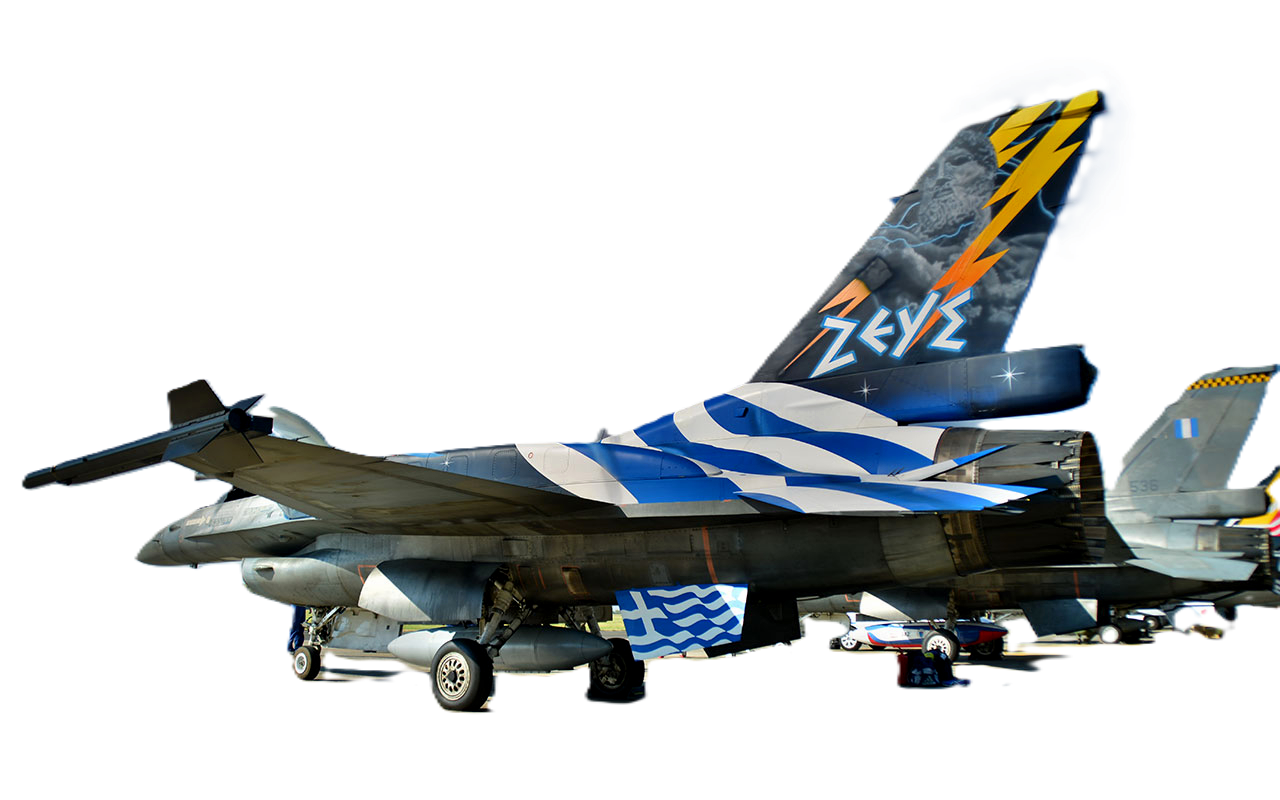Russian Aircraft "Mig"
MiG-29 Fulcrum
![Side view of a MiG-3 painted in green and brown with the VVS insignia taking off. The slogan "Za Rodinu" (For [the] Motherland) is painted on its side.](https://upload.wikimedia.org/wikipedia/commons/thumb/7/78/MiG-3_at_Mochishche.jpg/300px-MiG-3_at_Mochishche.jpg) |
|
| A restored MiG-3 at an air show in Russia, 2011 | |
| Role | |
|---|---|
| National origin | Soviet Union |
| Manufacturer | Mikoyan-Gurevich |
| First flight | 29 October 1940 |
| Introduction | 1941 |
| Retired | 1945 |
| Primary users | Soviet Air Forces (VVS) Soviet Air Defence Forces (PVO) Soviet Naval Aviation |
| Produced | 1940–1941 |
| Number built | 3,422 |
| Developed from | Mikoyan-Gurevich MiG-1 |
| Variants | Mikoyan-Gurevich I-211 |
|
|
.
History Russian Aircraft Corporation "Mig"
Mikoyan MiG-3
Soviet fighter-interceptor
used during World War II

The Mikoyan-Gurevich MiG-3 (Russian: Микоян и Гуревич МиГ-3) is a Soviet fighter-interceptor used during World War II. It was a development of the MiG-1 by the OKO (opytno-konstruktorskij otdel — Experimental Design Department) of Zavod (Factory) No. 1 in Moscow to remedy problems found during the MiG-1's development and operations. It replaced the MiG-1 on the production line at Factory No. 1 on 20 December 1940 and was built in large numbers during 1941 before Factory No. 1 was converted to build the Ilyushin Il-2.
Operational history

MiG-3s were delivered to frontline fighter regiments beginning in the spring of 1941 and were a handful for pilots accustomed to the lower-performance and docile Polikarpov I-152 and I-153 biplanes and the Polikarpov I-16 monoplane. It remained tricky and demanding to fly even after the extensive improvements made over the MiG-1.[Many fighter regiments had not kept pace in training pilots to handle the MiG and the rapid pace of deliveries resulted in many units having more MiGs than trained pilots during the German invasion. By 1 June 1941, 1,029 MIG-3s were on strength, but there were only 494 trained pilots. In contrast to the untrained pilots of the 31st Fighter Regiment, those of the 4th Fighter Regiment were able to claim three German high-altitude reconnaissance aircraft shot down before war broke out in June 1941. However high-altitude combat of this sort was to prove to be uncommon on the Eastern Front where most air-to-air engagements were at altitudes well below 5,000 metres (16,000 ft). At these altitudes the MiG-3 was outclassed by the Bf 109 in all respects, and even by other new Soviet fighters such as the Yakovlev Yak-1. Furthermore, the shortage of ground-attack aircraft in 1941 forced it into that role as well, for which it was totally unsuited.[Pilot Alexander E. Shvarev recalled: "The Mig was perfect at altitudes of 4,000 m and above. But at lower altitudes it was, as they say, 'a cow'. That was the first weakness. The second was its armament: weapons failure dogged this aircraft. The third weakness was its gunsights, which were inaccurate: that's why we closed in as much as we could and fired point blank.
0
KmCeiling
0
KmCombat RANGE
0
Km/hAircraft Speed
0
Max Crew
Photo Gallery
Russian Aircraft Corporation "Mig"
Mikoyan MiG-3
Soviet fighter-interceptor
used during World War II


Russian Aircraft Corporation "Mig"
Mikoyan MiG-3 Sovjet Fighter WW2
General Info
-
-
-
-
- Crew: 1
- Length: 8.25 m (27 ft 1 in)
- Wingspan: 10.2 m (33 ft 6 in)
- Height: 3.3 m (10 ft 10 in)
- Wing area: 17.44 m2 (187.7 sq ft)
-
-
-
Powerplant
-
-
-
-
- Empty weight: 2,699 kg
- Gross weight: 3,355 kg
- Powerplant: 1 × Mikulin AM-35A V-12 liquid-cooled piston engine, 993 kW (1,332 hp)
- Propellers: 3-bladed variable-pitch propeller
-
-
-
Performance
-
- Maximum speed: 505 km/h (314 mph, 273 kn) at sea level
- Combat range: 820 km
- Service ceiling: 12,000 m (39,000 ft)
Armament
- Guns:
-
- 1 × 12.7 mm Berezin UBS machine gun
- 2 × 7.62 mm ShKAS machine guns in the cowl
- (later models would feature additional 2 x UBK machine guns underwing, one per wing)
.
Mikoyan MiG-3 Soviet fighter-interceptor used during World War II
Links to Youtube & Others
The large number of defects noted during flight testing of the MiG-1 forced Mikoyan and Gurevich to make a number of modifications to the design. Testing was done on a full-size aircraft in the T-1 wind tunnel belonging to the Central Aero and Hydrodynamics Institute (TsAGI) to evaluate the problems and their proposed solutions.
Russian Aircraft Mig
MiG-3 WW2
The MiG-3's top speed of 640 km/h (398 mph) at 7,200 metres (23,622 ft)[6] was faster than the 615 km/h (382 mph)[7] of the German Messerschmitt Bf 109F-2.
Youtube Link
The NKAP (Narodnyy komissariat aviatsionnoy promyshlennosti—People's Commission of the Aircraft Industry) announced its 1941 production plan on 9 December 1940. Zavod Nr. 1 in Moscow-Chodinka would be required to build a total of 3,500 in 1941.
